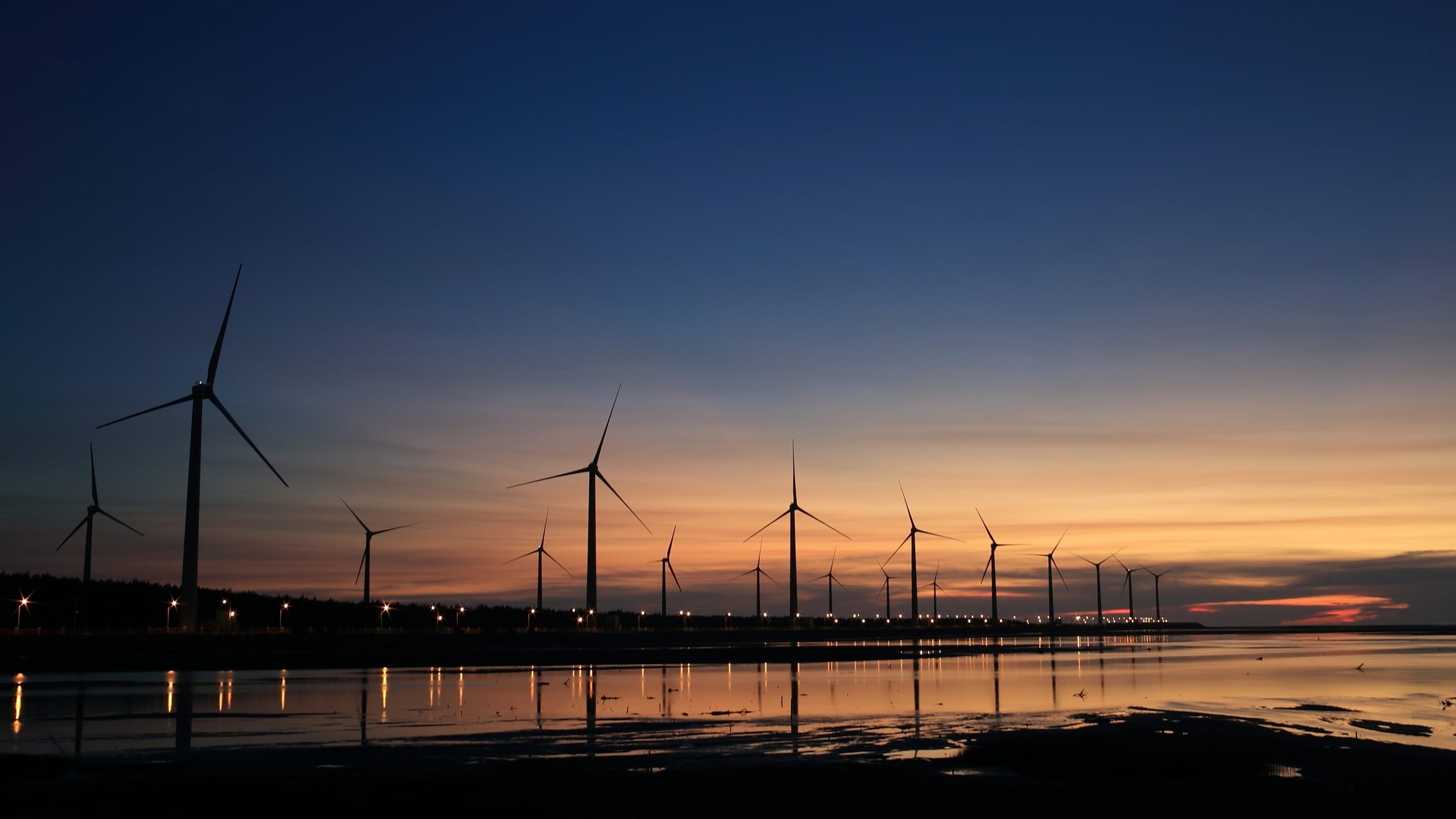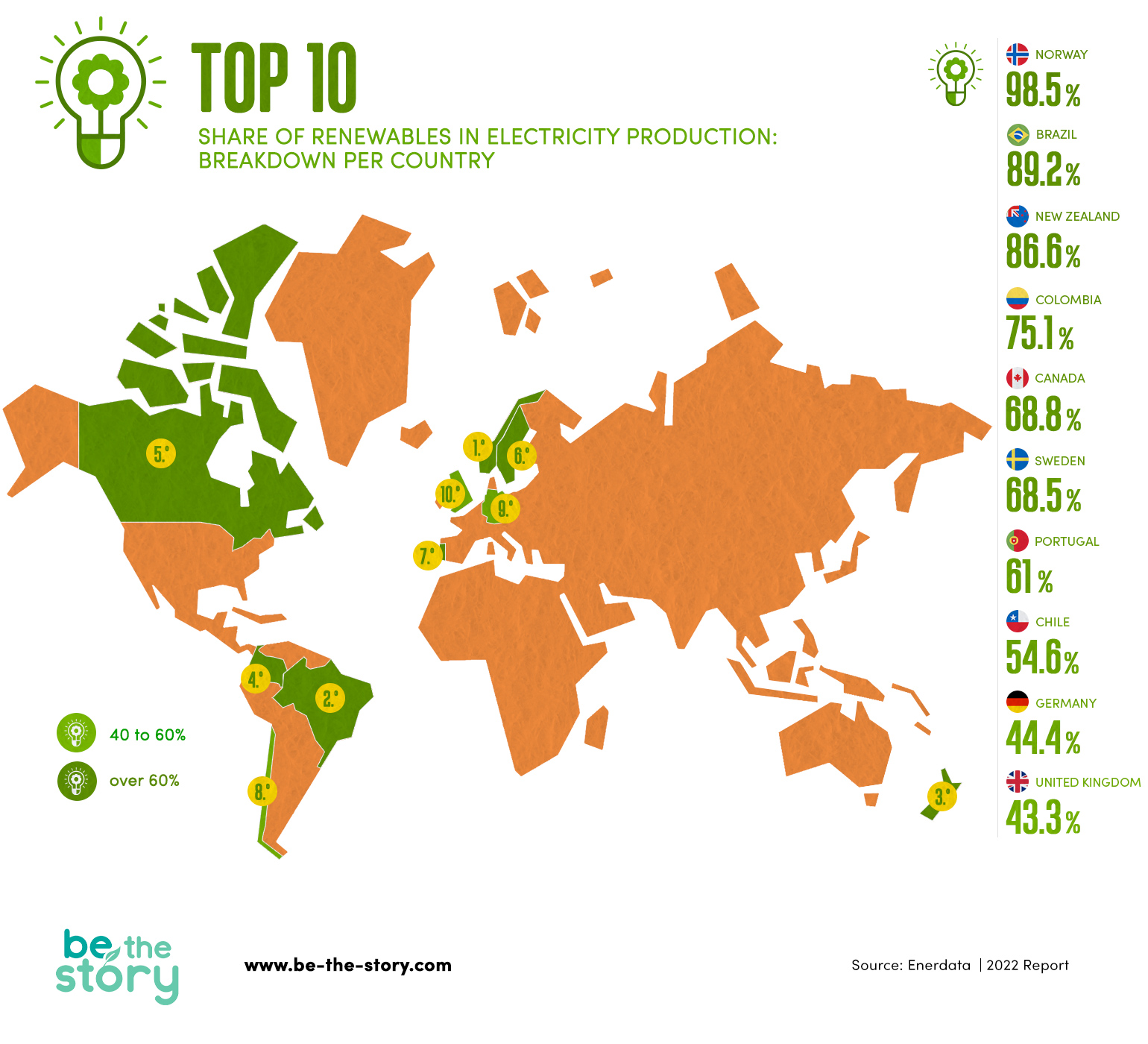
Cleanest countries: who leads on renewable energy?
Renewable energy is gaining momentum and already accounts for more than a quarter of the world’s electricity production. Europe produces more electricity from renewable sources than from fossil fuels, a milestone first reached in 2020 that lasted throughout the next two years. These are the countries leading the transition.
Renewable and non-renewable sources: what is the difference?
Before we move on to the list of the cleanest countries, let’s start with the basics. After all, what even is the difference between these two types of energy sources?
Put simply, we can not run out of renewable energy sources. In other words, renewable sources can regenerate continuously, with no human intervention. These natural energy sources, such as the sun or wind, also emit much less greenhouse gases (GHG) such as CO2 and are often called “clean” or “green” energies.
On the other hand, non-renewable energy sources, or fossil fuels, have limited reserves, i.e., can be exhausted, and their procurement process is slow, making it difficult to keep up with the current pace of consumption.
By using renewable sources for energy production, we are contributing to a more sustainable planet, where life and survival of future generations is not at risk. It is vital to rethink how energy is produced worldwide.
Which countries top the world ranking for renewable energy production?
Using electricity from renewable energy sources is becoming a reality. Data from 2022 shows that almost 30% of the electricity consumed on the planet comes from renewable sources. This data was collected by consulting company Enerdata, which annually publishes a report on energy production and consumption worldwide and its environmental impact.
The same report shows the largest producer of “clean” energy is Norway, where 98.5% of the energy produced comes from renewable sources. Brazil, with 89.2% of renewable energy, surpassed New Zealand (which fell one position compared to 2021 and currently ranks third with 86.6%) and takes second place. Portugal ranks 7th, having maintained its position compared to 2021, with 61% of the energy generated from renewable sources.

Norway 98.5%; Brazil 89.2%; New Zealand 86.6%; Colombia 75.1%; Canada 68.8%; Sweden 68.5%; Portugal 61%; Chile 54.6%; Germany 44.4%; United Kingdom 43.3%. Source: Enerdata, 2022 Report.
Why should we move to renewable energy?
The high GHG emissions associated with non-renewable energy sources are one of the main culprits of climate change, leading to rising sea levels and atmosphere temperatures, and loss of biodiversity. In other words, the use of non-renewable energy sources directly impacts the future of our planet.
This transition therefore involves decarbonising electricity production through the use of renewable energy sources, as opposed to non-renewable energy sources.
In response, ambitious environmental policies have been launched in the European Union, USA, China, India, Japan, and Australia. Decreasing technology costs in recent years has led to increased demand for renewable energy production. Through the European Green Deal, the European Union has committed itself to achieving carbon neutrality by 2050.
What are the most used renewable energy sources?
Wind and sun (sources of wind and solar power, respectively) are the fastest growing renewable energy sources. Data from the International Energy Agency’s Annual Report points to a 17% increase in wind energy, and to an 18% growth in solar energy in 2021 compared to the previous year.
In 2022, the production of energy from renewable sources in the European Union was almost 40%, with wind and solar power generating 22% of all electricity, surpassing the use of natural gas for the first time.
The road is long and winding, but the facts show that global efforts are being made to improve the environment and the planet, with visible results. For the first time in Europe, more electricity is being produced from renewable sources than from fossil fuels. An important stepping stone towards a more sustainable future.


